Artwork is a great way to make a room more interesting, but putting it up can be hard. The trick is to know where to hang art and how to do it. Putting art on a wall is a great way to make a room look better, show off beautiful pieces, and tie a room’s design together. It lets you make a room feel certain and show off your tastes and interests.
No house is complete without at least one or more pieces of art. Even though it might be scary to hang things on those empty walls, you’ll be glad you did when you finally get that gallery wall up and can look at your favorite paintings and photos every day.
People often wonder how some people make putting up wall art look so simple. In this article, we show you many tricks on how to arrange art on a wall. So, let’s get started and discover the ideas and tips we have compiled for you!
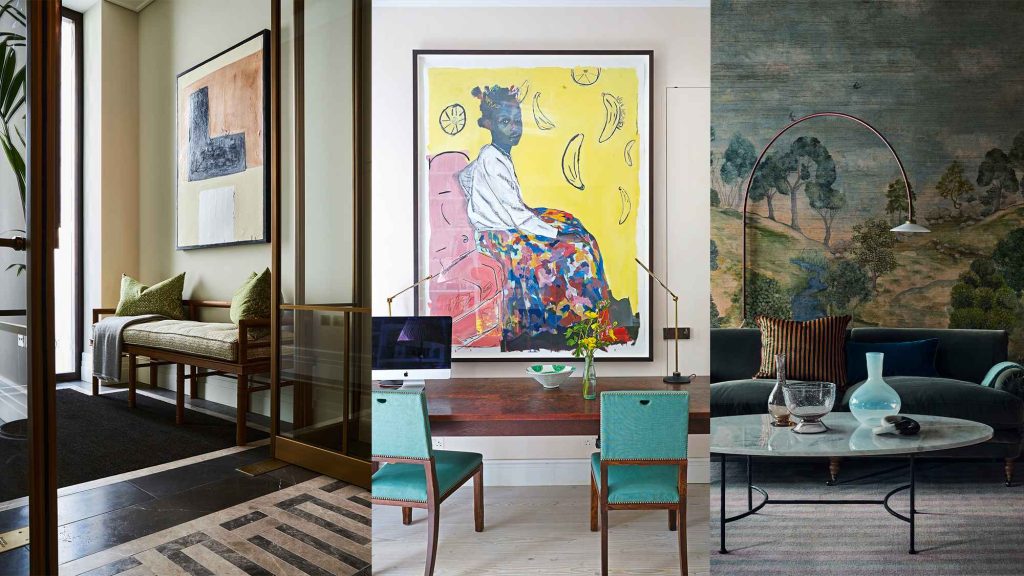
How to Arrange Art on a Wall
Make a gameplan
Professionals say you should try different ways to arrange wall art before you start putting it up. Butcher paper is one way to do this. Cut the paper to the size of your artwork and tape it to the wall to see how it will look.
It will also give you a better idea of how your wall will look as a whole if you are arranging more than one piece. You can easily move your cut-outs around and try out different places, patterns, and ways of putting them together. No need to worry about fixing holes in your wall that you didn’t want.
Consider the space of the room
The size and shape of the room can greatly affect how you hang pictures. So, according to the room:
Bedroom
Big pieces that make a statement above the bed are popular because they give the room a single point of interest. Depending on what art you choose, the wall hanging can also give your bedroom a calm feeling, mostly for resting and relaxing.
A complicated arrangement of smaller pieces of art in the bedroom can look like a mess, but if done well, it can have the same calming effect.
Kitchen
Most of the time, useful kitchen appliances take up wall space. You might look for wall space between storage, cabinets, stove hoods, appliances, and the like. So, you should decide where to put art in your kitchen after you’ve set it up to be as comfortable as possible.
It doesn’t make sense to hang a favorite framed wall hanging in a place where a knife block, a place to dry dishes, or a wine rack would fit better. First, figure out how your kitchen will work, and then think about how art can finish the look.
Bathroom
Always choose smaller pieces when you’re thinking about how to hang art in a small bathroom. Don’t worry, because when decorating walls, sometimes less is more. Think of creative ways to put things, like hanging a painting where it can be seen in the bathroom mirror.
Also, remember that you are decorating a room with much humidity. Don’t hang art too close to the shower or other places where water droplets and steam could damage it.
Living room
Usually, the living room is the biggest in the house, so hang a big piece of art or make a unique gallery wall above the fireplace or couch.
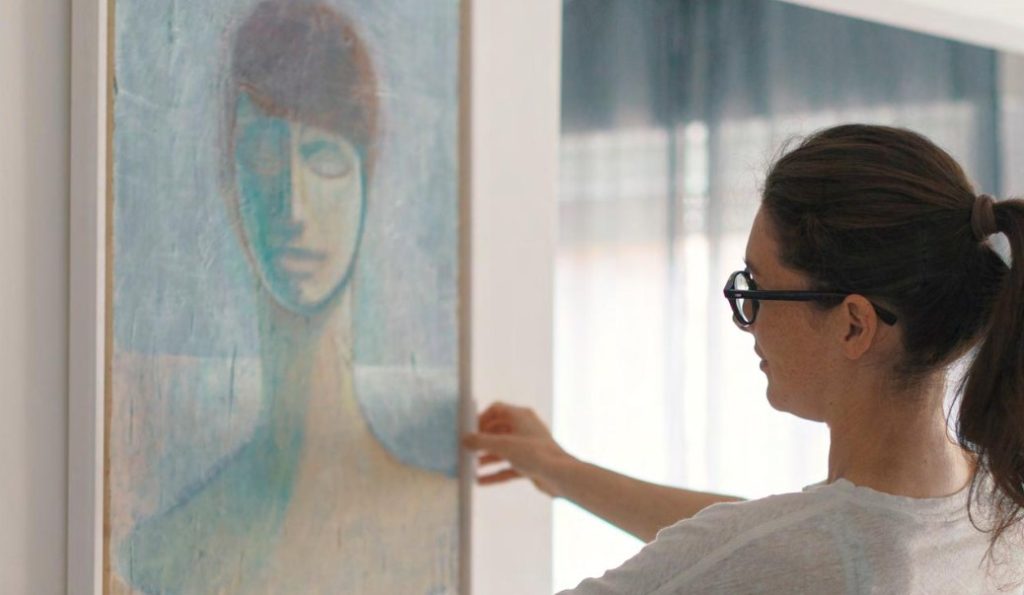
Hang art at eye level
A good general rule is to hang art so that the middle is at eye level and is easy to see. On average, eye level is between 57 and 60 inches above the ground.
You might want to hang your art lower if the room has a low ceiling or if it’s in a living room where people often sit and therefore don’t have as high an eye level.
Begin with a visual line
Consider a clear beginning point when arranging a wall art, regardless of whether you choose an asymmetrical or symmetrical layout. This might be a fictional ceiling-to-ceiling line from which artwork flows.
It could also be a fictional vertical line around a window frame to the right, which artwork consistently extends. You can achieve visual order by framing your arrangement with a single, symmetrical invisible line. You’ll see that the top two photos in this arrangement are vertically aligned.
Think about colors
Consider how different pieces of artwork can best complement one another and the other components in the space when grouping them. For instance, you could want to hang art that properly complements the colors of your wall paint, wallpaper patterns, furniture, and pillows.
While it is common practice to employ artwork to bring a color theme together for a professional effect, you also need to consider a contrasting theme that might capture the bold look you want to create in a room.
Hanging vs. resting
The most popular option for displaying art in a home is hanging it on the wall. Remember that there are also other choices. The placement of artwork on imaginative surfaces in various rooms of your home may be required by certain arrangement options.
Surfaces like a fireplace or counter give guests a playful touch and a sense of adventure. Additionally, you can put them on elegant art shelves. You can place other items next to your artwork using art shelves, such as plants, sentimental objects, or other three-dimensional objects.
Read more: How to Make a Room Feel Warm and Cozy
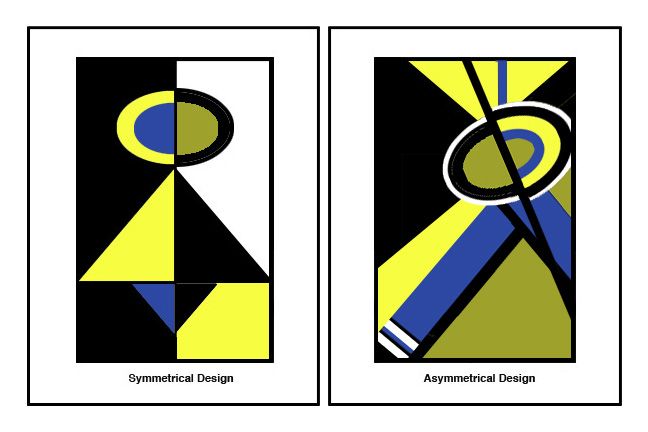
Asymmetrical vs. symmetrical
There are many patterns or tactics you can use if you’re trying to figure out how to hang several images on a wall. Following is a summary of several common wall art layout ideas:
Symmetrical looks
Side-by-side, regularly spaced wall art compositions are frequently the most aesthetically pleasing for people who want order.
To create an elegant and well-organized aesthetic, use art prints and frames of the same size and design. A portrait-focused painting shouldn’t be placed next to a landscape-focused one.
The details are what create symmetry and beauty. Each painting should be perfectly spaced using a ruler. Additionally, the spacing should be uniform on all sides if you hang a set of four pieces in a grid.
Asymmetrical looks
Explore asymmetrical art display options while using your creativity. Think about hanging an odd number of pieces, using stepped or clustered arrangements, and using various frame styles, sizes, and colors.
You might wish to use a larger item as the centerpiece, surrounded by smaller pieces with complementary themes. Observe how art is hung in galleries for inspiration.
Asymmetrical layouts create a more collected and eclectic atmosphere. They could be enormous, salon-style gallery walls or little groups of artwork. Both methods let you combine components of various sizes, shapes, orientations, and frames of various types and widths.
A gallery wall also offers the chance to mix and match wall sculptures, baskets, dishes, mirrors, and sconces with paintings, photos, and prints.
Although there is greater potential for creativity in these less formal arrangements, it can be challenging to keep the aesthetic balance.
Go big with the gallery art
You may ask how many paintings there should be in space. Unfortunately, there isn’t a solution that everyone can agree on. Consider how much of the empty wall space you want to decorate and how much would be covered by an attractive design.
Use the butcher paper method described above to determine which configurations you prefer. A “gallery wall,” for those unfamiliar with the word, is a collection of artwork, pictures, and other decorations that you may organize to cover a whole wall.
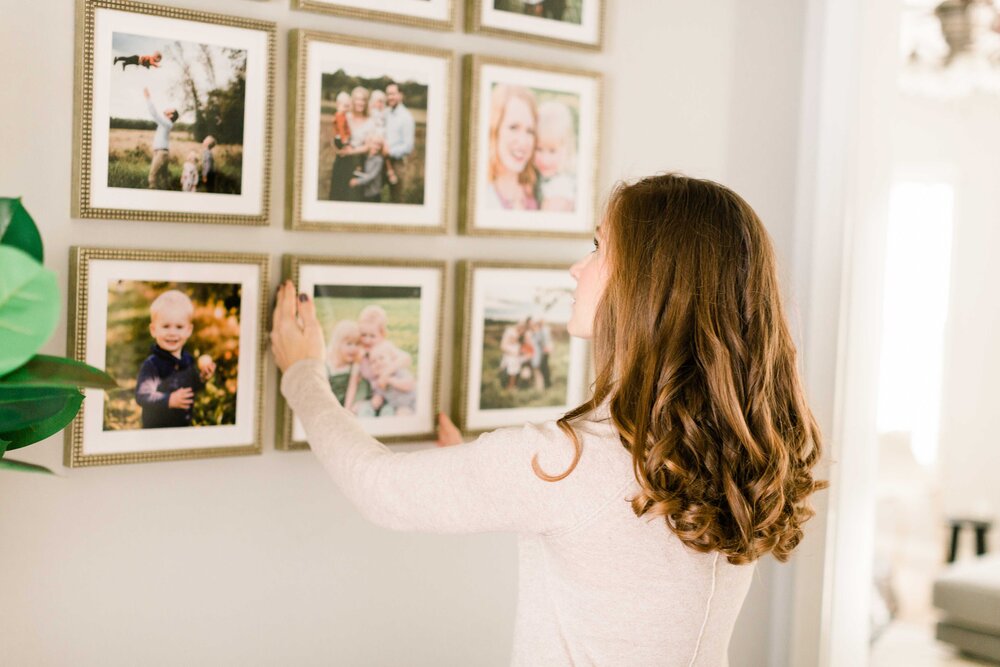
Include photos on a gallery wall
You can display photographs on gallery walls as well, so they don’t only have to be paintings and prints. You can also show off recent and family photos on a gallery wall. Here are some pointers for mixing ingredients harmoniously.
Select images that share the same color scheme as the other artworks. You can blend black-and-white images into different color schemes. However, they go particularly well with similar-colored drawings and etchings.
For family photos, choose a frame with a broad mat. This will assist them in blending into the gallery wall and give the impression that they are framed works of art.
Consider the lightning
Don’t overlook lighting when it comes to the artwork you select. Consider using a picture light or wall sconces to draw attention to the wall art. Make sure no larger ceiling fixture in the space blocks your view of the photographs.
Tips for Hanging Art on Different Surfaces
The weight of the piece and the type of wall on which it will be displayed will determine how you should hang it. Following are some general principles:
Drywall on a stud
Mark the edges of the studs that are found by moving a stud finder around the area where you wish to display your painting. Next, determine which stud is the greatest location for your picture hanger, then hammer it into that stud.
Drywall with no stud
Instead of using a picture hanging, use an anchor and a screw. The anchor holds your artwork in place, which sinks into the drywall.
Masonry or concrete walls
The procedure is a little more involved when using these surfaces. Make a hole in the wall that can accommodate a masonry screw using a hammer drill and a masonry bit to hang a heavy picture, or use a wall anchor and screw.
Also read: How to Choose a Color Scheme for Living Room
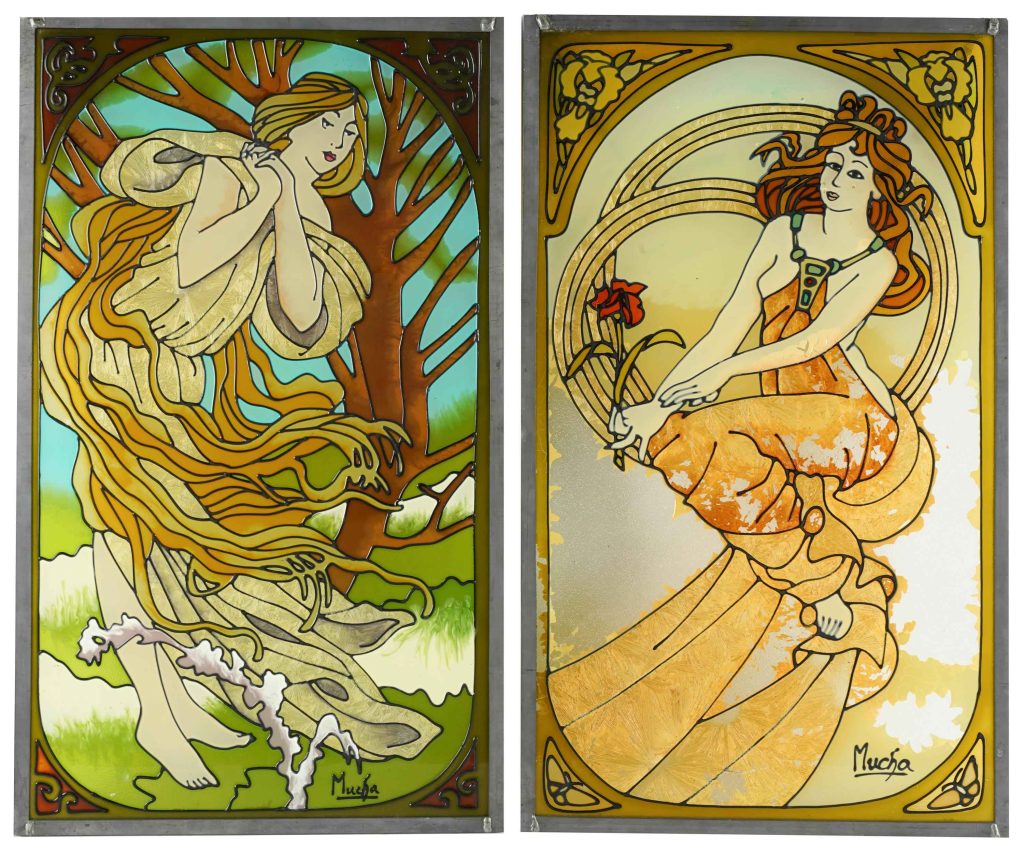
Choose and Pair Art Styles
Choose works of art for your home that speak to you when making your purchase. When shopping online, read the item description to find out more about the artist and verify the pricing and shipping details.
Verify that the art you select relates to or complements your general theme and furnishings design. Artworks might be accent pieces, or they can match the color scheme of your room.
When pairing pieces of art, you can be creative. Finding a rhythmic element within each of the various art styles is necessary. The paintings could be identical in size, monochromatic or complementary in color, mounted similarly with the same frame, or any combination.
Choose pieces that somehow fit together, whether it’s through color, style, or subject matter. For instance, you may pair black-and-white pictures with fine art posters.
Alternatively, you may make a point by contrasting pieces in various genres, such as a striking piece of Pop art with an old painting.
Spacing Wall Art
It can be challenging to judge the distance between wall art pieces by eye, so you’ll need to utilize a measurement tool. So, how far apart should the pieces be spaced?
We enjoy experimenting with varying spacing between pieces of art to give interest to a room. The normal range is between three and six inches, depending on the pieces, the wall’s size, and the ceiling’s height. Create a grid with the same space between each piece, both to the sides, above, and below, if the artworks are all the same size. Adapt your spacing to the wall’s feel, but the following examples offer some ideas:
- Grid layout: leave three to four inches between each frame to keep the arrangement compact
- Triptych layout: give yourself an extra four to six inches of space.
Conclusion
Planning is ultimately the key to arranging wall art. Once you’ve put your pieces in order, consider their weight and the kind of wall surface you want to hang them on. Ensure that you have the appropriate art hanging hardware at this point to securely mount your pieces of art without causing harm to the pieces or the wall.
With these tips on how to arrange art on a wall, you should feel more at ease placing wall art to beautify your living area. However, keep in mind that they are not absolute facts. The layout you design should, above all, feel organic and purposeful.